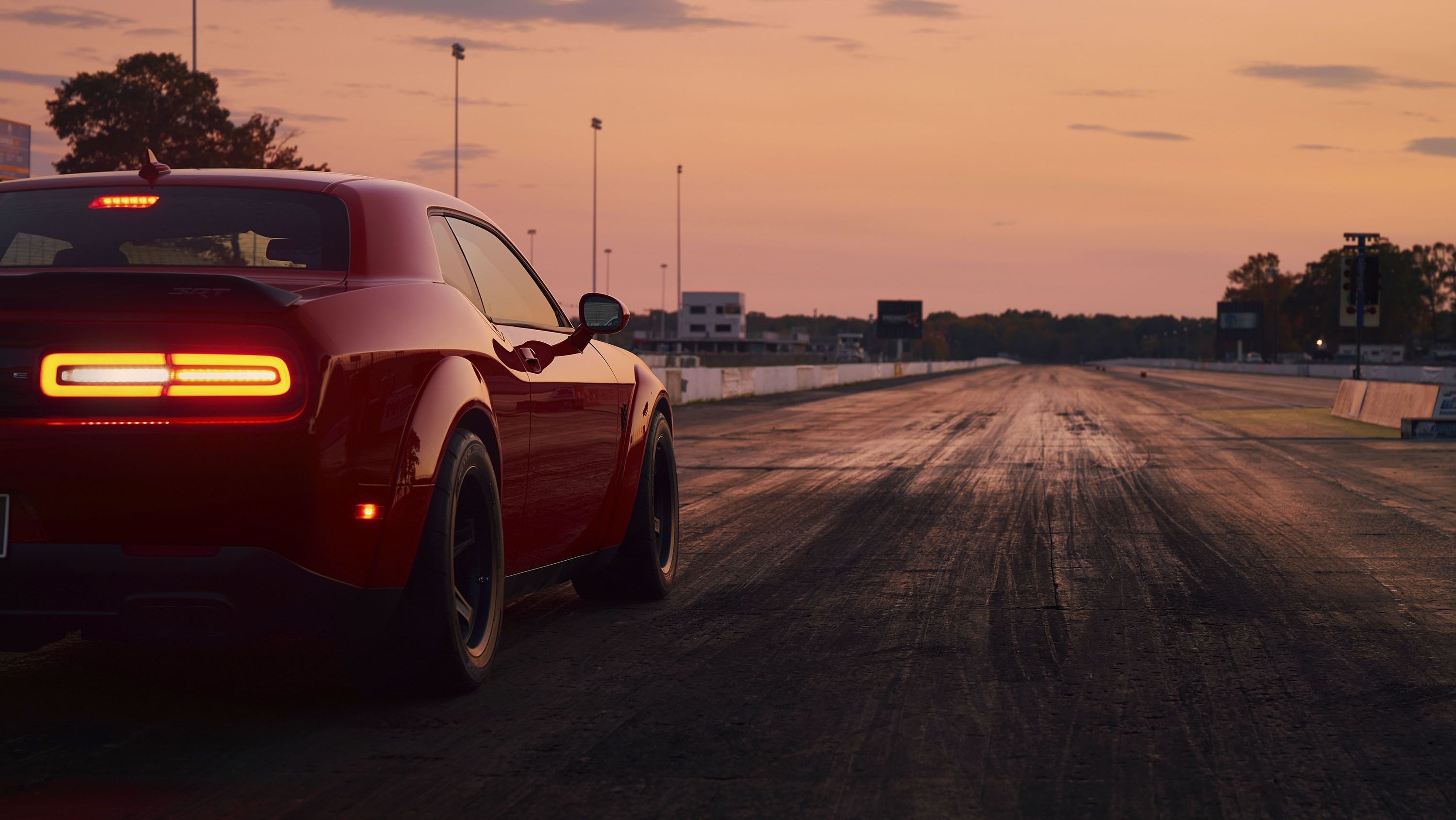Unless you’ve been hiding under a proverbial rock for the last few weeks, you’re most likely familiar with the specs for the newly released Dodge Challenger SRT Demon. Just in case, here’s a quick refresher – 840 horsepower and 770 pound-feet of torque from a supercharged 6.2-liter V-8 running on 100-octane race fuel. 0-to-60 mph in 2.3 seconds. 200 pounds lighter than the Hellcat. 9.65 seconds at 140 mph in the quarter mile. 3-foot wheelies off the line. Dodge is quite clear on the matter – the Demon was built to do one job very, very well – traverse the quarter-mile run as quickly as possible while maintaining some semblance of street legality. At this point, it’s obvious this beast-mobile is quick, but there’s one tidbit of info Dodge has conveniently left out of the conversation thus far – how fast is it? To find out, we pulled out our calculator and did a little thought experiment.
Speculating on the top speed of a car like the Demon is actually a pretty complicated proposition, but if you’re looking for a quick and easy answer, here it is – 168 mph. That’s the maximum-rated velocity for the Demon’s Nitto NT05R drag radials, which means that’s pretty much the car’s top speed if you don’t swap out the rubber.
But let’s presume you did change the tires – given ideal conditions and a long enough track, how fast could the really Demon go? Read on to find out.
Continue reading for the full story.
First, Some Numbers
To start, we pulled out the spec sheet and jotted down a few numbers. Compared to the “regular” Challenger Hellcat, the Demon is outfitted specifically for domination at the drag strip, which can have a profound effect on the way it performs when going for top speed numbers.
First off is gearing. While both the Hellcat and Demon utilize a TorqueFlite eight-speed automatic transmission, the Demon gets shorter gearing with a 3.09 rear end, as compared to the relatively long-winded 2.62 final ratio for the Hellcat.
Complicating matters is a difference in the diameter of the tires for both cars, with the Demon getting smaller 27.9-inch tires (315/40R18), and the Hellcat getting larger 28.7-inch tires (275/40R20). Meanwhile, the Demon gets a modest increase to its maximum engine rpm, adding 300 rpm to the Hellcat’s 6,200-rpm redline for 6,500 rpm at the far end of the tach.
Plugging all those numbers into one of several handy “top speed calculators” found for free on the Internet, like this one, while assuming a common 0.67 eighth-gear ratio for both vehicles, we find the Hellcat could theoretically reach 302 mph, while the Demon could theoretically reach 261 mph.
But What About Aero?
Of course, those figures would only be attainable in a total vacuum (anyone got a hyperloop tube available for rent?), which means if you wanna find something a little more “real world,” you gotta factor in aerodynamics, as well.
The Challenger Hellcat offers up a drag coefficient of .380, which isn’t all that impressive in the face of super-slippery designs from Tesla… but I digress. The Demon, by comparison, will most likely be even more of an obstruction to the atmosphere. Making the additional drag are the extra inlets in the front fascia, that enormous cold-air intake Dodge is always bragging about, wider fenders, and wider tires, all of which will significantly hinder the 840 horses on tap to motivate the rear axle.
The Big Number
At the end of the day, the regular Hellcat should be able to hit 200 mph in the top end, as determined by the manufacturer. And although its got an extra 133 horses and 300 rpm to its advantage, the Demon’s shorter gearing and increased drag will make it slower when run flat out. We’re thinking 190 mph max.
Conclusion
190 mph – that’s our number and we’re sticking to it. At least until the official specs are released, of course. What’s your take? Do you think the Demon will manage 200 mph like the Hellcat? Let us know in the comments.
References
Read our full review on the Dodge Challenger SRT Demon.

